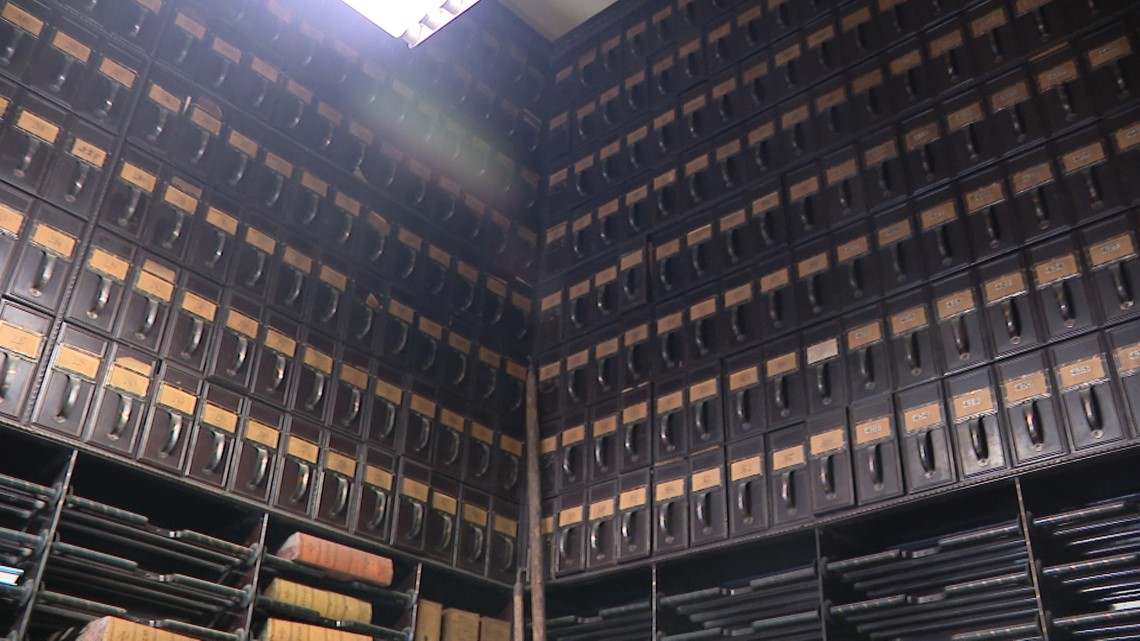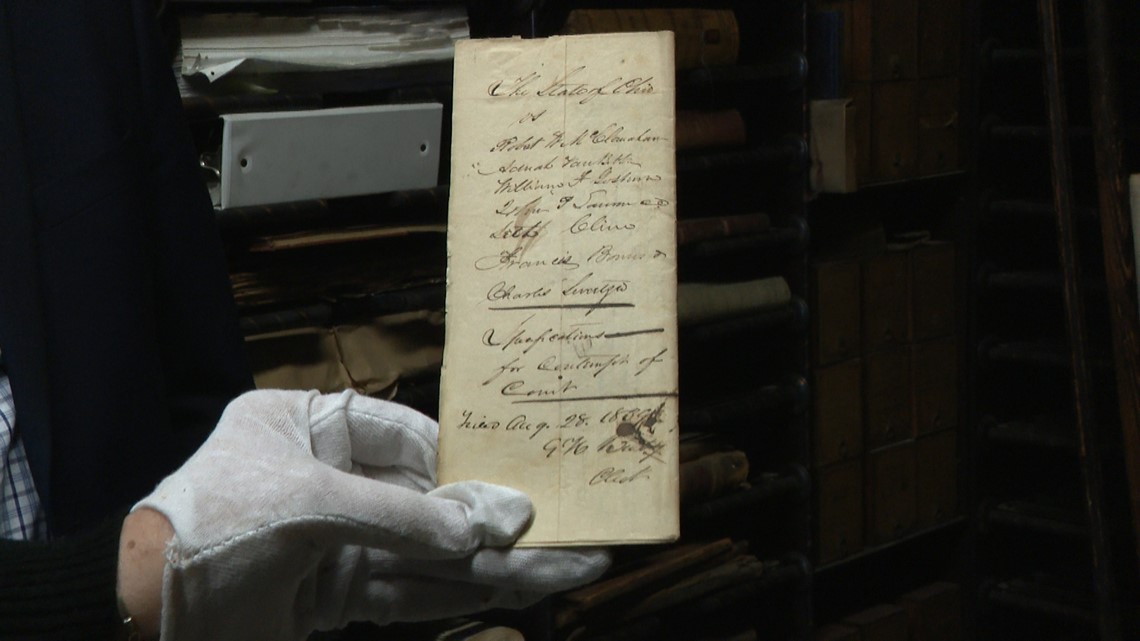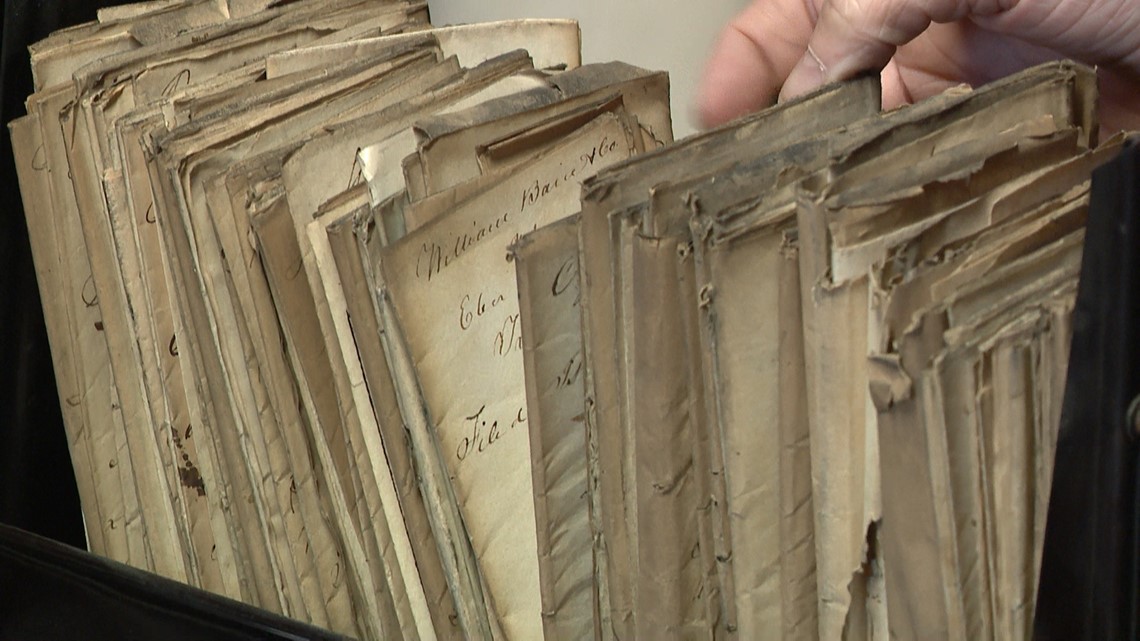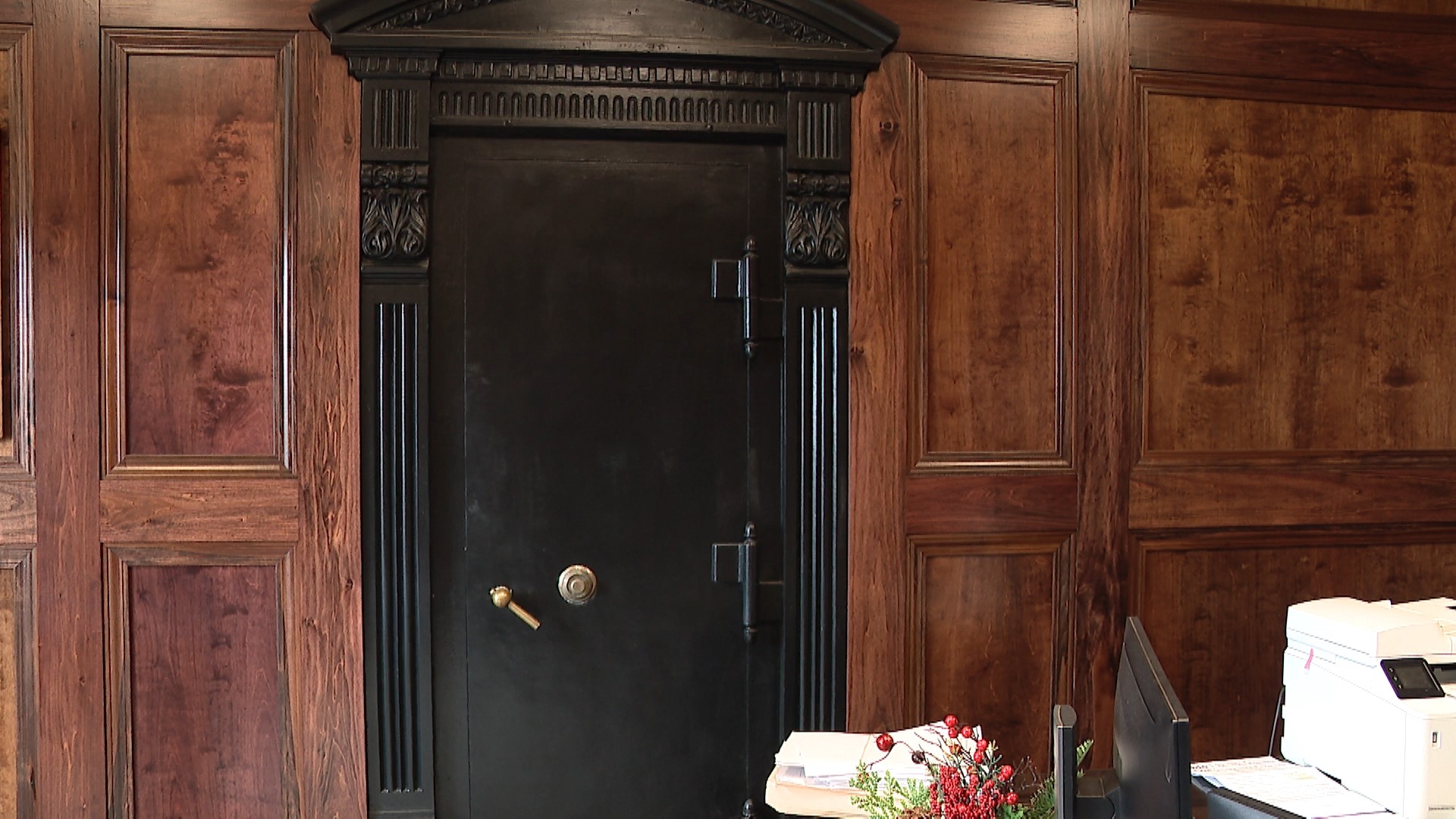MARION, Ohio — Call it a case of pandemic boredom.
When Marion County Administrative Judge Warren Edwards set up an office in an old storage room at the Marion County Courthouse in the spring of 2021, he got a little restless.
“I was playing with a vault door that has a combination lock on it that had been sealed for a while,” he said. “I don’t know how long, but it had been sealed for some time.”
His secretary witnessed his struggles and thought she might be able to help. She had worked for the clerk of courts for nearly two decades, so she decided to try a combination that had been used on other doors in the courthouse.
“She spun the dial, did her magic, and voila, all of a sudden, the door opened up, and we opened this long-sealed door, to discover a vault, and we kinda knew that there was a vault back there, but we didn’t know that there would be anything in it or how large it would be,” he said. “It looked like walking into some tomb from Raiders of the Lost Ark.”
Inside that once-hidden room was a huge layer of dust. But, beneath that, was a treasure trove of history. Some documents date back nearly two centuries, to before the courthouse was even built in 1884.




Along with the court documents, sealed up in what the judge estimates to be more than 1,000 drawers, there are immigration papers, execution files and even physical evidence, including a bullet and tobacco pipe.
One of the most interesting finds has been an 1839 contempt of court document for the State of Ohio v. Robert McClanahan and the Virginians who traveled to Marion County to look for Bill Anderson. Anderson was accused of being a runaway slave and the story of his court battle is detailed on a historical marker that stands outside the courthouse.


“When the judge ruled in Mr. Anderson’s favor, the Virginians pulled out pistols and rioted,” Edwards said. “And so, there was a large riot in downtown Marion, and the judge and Mr. Anderson fled the courthouse, as the story goes.”
The hope is to find more court documents related to that case that could help to unravel more of the mystery. And Sharon Gattshall is more than on board to help in that effort.
She’s working on her bachelor’s in history from The Ohio State University-Marion, focusing on the Bill Anderson case. And she’s one of many students who will be working to help uncover and properly document what’s inside the room.
“I walked in this room, I couldn’t believe how many drawers there were and how many pieces of paper in this drawer and how it’s all been preserved and how we’re going to find what we want to find,” she said.
OSU-Marion Professor Margaret Sumner was equally surprised at what was behind that vault door.
“When I walked in, I was blown away, too,” she said. “It’s amazing. Just a wonderful piece of hidden history that, you know, is just waiting for young students to get going and start having some fun with it, and you know, doing hands-on history.”
Those students will be OSU-Marion undergrads. They’ll work to catalogue what they find inside the vault — a job that will likely take quite some time.
“It humanizes the history of the county and gets students a real sort of interesting view, social history, intellectual history, political history, legal history of the county,” Sumner said.


For Edwards, the immigration paperwork is one of the most interesting finds in the room. He flipped through some of the books for 10TV, showing that many pages include photographs.
“These are people fleeing Europe, seeking refuge here in our community, and who want to become Americans, so that was pretty moving,” he said. “And I located names of families that still exist in Marion whose ancestors these would have been, so that’s pretty exciting to see as well.”
Also in the room are Ohio Supreme Court documents, which likely ended up there during a time when the court was a traveling court, and statements from political candidates, along with a couple of photographs, including one of former Judge Justice, a name Edwards jokes that any adjudicator would be grateful to have.


There is still so much to uncover, and it’s easy to wonder how long this history might still have been hidden if it weren’t for the judge’s curiosity.
“I don’t know if I want to be the guy advising people to open random doors, but sometimes when you take a risk, it pays off, and that, I think it did here,” he said.
Now he hopes that what has been revealed inside the room behind the vault door will inspire others to want to save, protect and uncover other historical secrets hidden inside the courthouse.
“I’m just really honored and blessed and consider it such a privilege to serve the people of Marion County and to have that added bonus of being able to be the custodian and keeper and restorer of this historic building, and let alone this vault, is really an honor,” the judge said. “I’m just absolutely privileged to do it.”
For a tour that reveals other hidden treasures inside the Marion County Courthouse, click here.

